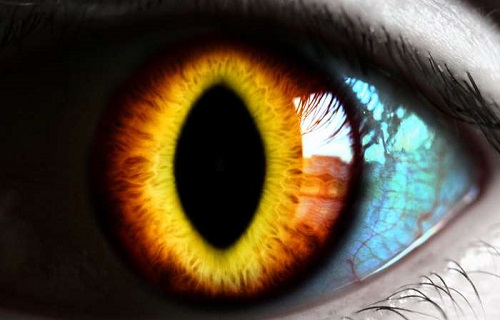FWP:
A wound (especially a deep dagger-slash) is like an eye (especially a narrowed one) because they're both outwardly somewhat linear-appearing, and they both conceal their major depths behind a deceptively small surface opening.
Moreover, there's the idiomatic meaning for chashm-numāʾī of 'browbeat' or 'threaten'; on this point Bekhud Mohani is supported by Chishti, who adds 'to scold' [ḍāñṭ ḍapaṭ karnā] (738); and Mihr, who also proposes the ideally relevant 'to look angrily at' [ġhuṣṣe se dekhnā] (606). Also enjoyable is the word- and meaning-play between the 'eye-showing' and the 'coming into view' [naz̤ar ānā] of the wound. In fact the main appeal of the verse is the clever deployment of this idiom.
Each wound that becomes visible is thus a reproving 'eye-showing' by Grief, reminding the lover that wounds shouldn't come into view at all, but instead should remain hidden. Or else we can read the first line not as a personification of an active Grief, but as a more general reflection. In that case it's the lover himself, having learned from his grief the lessons and 'styles' or 'degrees' of restraint, who admonishes and polices his own behavior in the second line.
Note for grammar fans: We can read the perfect āyā as a substitute for the future subjunctive āʾe ; on this idiomatic usage see {35,9}.

Nazm:
Grief is teaching the lesson of restraint-- whatever new wound appears is the 'eye-showing' of that Ustad. The cause for a wound's similitude with an eye is obvious. (207)
== Nazm page 207